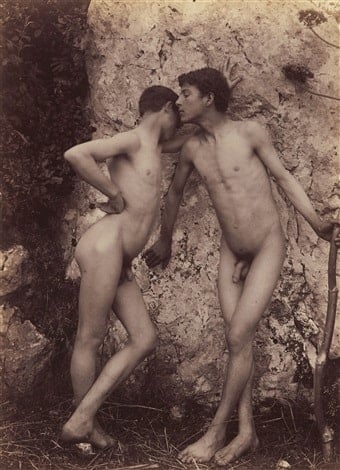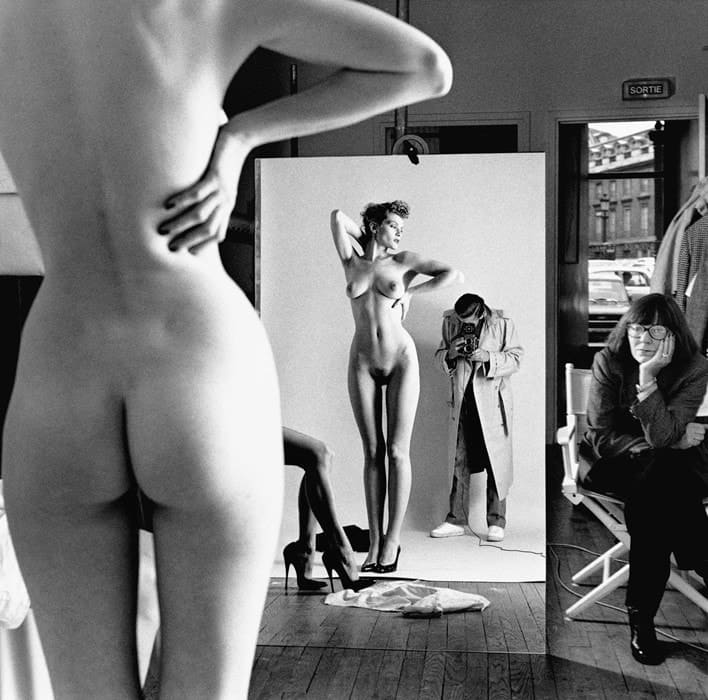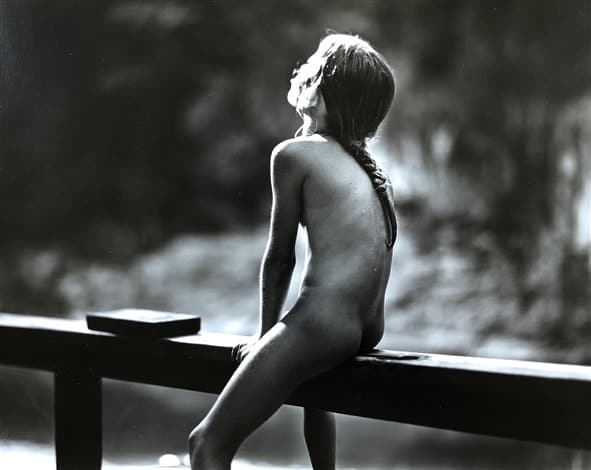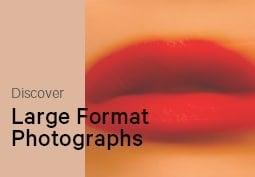Articles and Features
Nude Photography Pioneers: 10 Fine Artists Whose Visionary Work was a Source of Scandal

Courtesy of the Imogen Cunningham Trust
Nude photography has been a genre of fine art photography since the inception of the medium in the middle of the nineteenth century; depicting the nude human body with a particular emphasis on form, composition, and the emotional qualities evoked by such. Nude photography has played an important role in establishing photography as an accepted medium of fine art practice. Nude photography should be distinguished from erotic photography, although there has been some genre overlap over the years. Erotic interest, although often present, is secondary, which distinguishes fine art nude photography from both erotic or glamour photography, which focuses on showing the subject of the photograph in the most attractive way; and pornographic photography, which is of a sexually explicit nature and has the primary purpose of sexual gratification for the viewer and which ordinarily claims no aesthetic value in and of itself.
Fine art photographs are also not taken to serve any journalistic, scientific, or other practical purposes. The nude is still a controversial subject in all media, but especially with photography due to its inherent realism. The male nude has traditionally been less common than the female, probably due to the dominance of male artists in art history, and more rarely exhibited or published. Most controversial of all are the use of children as subjects in nude photography.
See our list below of examples of nude photography, and how various societal standards harshly judged the artists, often ignoring the main ethos and intent behind the work.
1. Baron Wilhelm von Gloeden

Albumen print, 22.6×16.9 cm.
Courtesy of Artnet
German-born photographer, Baron Wilhelm von Gloeden (1856-1931) worked predominantly in Italy where he began his photography career selling postcards depicting landscapes, local people, and monuments. However, he soon became known for his pastoral nude photographs of the Sicilian boys of Taormina that were widely collected and sought after, as well as condemned and censored. His photographs incorporated props like wreaths and togas, as well as theatrical settings that suggested ancient myths and allegories. His photography and subjects also show that he drew on the predominant themes and aesthetics of classical Roman and Greek art. The theatricality of his pieces and his ability to embed them within mythology and classicism helped to temper the overt homoeroticism of his work. His photographs are remembered today as a celebration of male sensuality and the beauty of the human form.
2. Eugene Durieu

Courtesy of the MET
Lawyer by trade, Eugene Durieu (1800-1874), also known as Jean-Louis-Marie-Eugène Durieu, was an advocate and pioneer for the medium in the early days of photography. He is best known for a series of studies he created in Paris from 1853-1854 of nude figures. Created in collaboration with friend and French Romantic painter, Eugène Delacroix, the photographs were intended to be utilised as models for artists as a more affordable and convenient option than live modelling. Delacroix and numerous other painters would go on to praise the results of Durieu, and often sketched from the photographs when formulating the positions of the figures in their compositions. As Durieu’s photographs were associated with the pursuit and study of fine art, the works were able to exist with minimal censorship and those who viewed them did not face the ostracisation that would have otherwise been typical for the era.
3. Imogen Cunningham
“I don’t know who tells me this, but somebody said, that I’m the first woman that ever photographed a nude man. I was made fun of at that time, when I photographed in 1915, my husband nude on Mount Rainier. In that one that I personally called The Fawn, he actually was sitting on a cake of ice, on that little lake. He chose the spot, and it was very nice. Of course they were not acknowledged as being a nice ladylike job, I was condemned, by the newspaper, a well-known publishing company in Seattle, and they called me an immoral woman.” – Imogen Cunningham
Known for her use of light to create bold images of botanical subjects and nudes, Imogen Cunningham (1883-1976) is considered one of the greatest American photographers. Characterised by a visual precision that emphasised texture, form, and light; Cunningham created a staggering body of work over the course of seventy-five years. Remembered as one of the first female photographers to produce a nude photograph of a man, her work was not without conflict, though the sensuous photographs themselves produce feelings of calm and radiate serenity.
Cunningham was also a founding member of Group f.64 (sometimes Group f/64) in San Francisco, a small group of photographers, including Edward Weston and Ansel Adams, that was dedicated to renewing photography on the West Coast through the use of a shared style characterised by carefully framed and sharply focused images.
4. Larry Clark

Larry Clark, Teenage Lust (from Tulsa), 1972
Courtesy of Artnet
American photographer and filmmaker Larry Clark (1943-) stepped into the spotlight in 1971 with Tulsa, his book of grainy and visceral documentary photographs depicting teens utilising drugs, engaging in sex, and physically fighting. In conjunction with his seminal film Kids that portrayed an honest and open perspective of New York City teenagers and that bordered on obscene, he opened the door to a whole new genre of biographical photography, as well as a massive amount of controversy and calls for censorship. Throughout his time Clark’s primary focus has drawn on his personal biography to starkly display drug use, AIDS, suicide, domestic abuse, and teenage sexuality in his works.
His raw and controversial depiction of an American youth culture that had previously never been illuminated has defined the medium and served as inspiration for generations of young filmmakers and photographers for decades such as noted artists Terry Richardson, Ryan McGinley, and Gus Van Sant.
5. Diane Arbus
One of the most distinctive photographers of the 20th century, Diane Arbus (1923-1971, born Diane Nemerov), is known for her portraits of unusual subjects. Passionate about depicting the fringes of society, Arbus immersed herself within various communities throughout her career. She photographed circus performers, transvestites (the term utilised at the time), campers at nudist colonies, as well as dwarfs and giants. Remarkable and noted for her ability to photograph her subjects as individuals with rich stories, she took her time and was gentle with her sitters; confronting her own prejudices and fears in order to capture their lives with tenderness and dedication.
6. Helmut Newton

© Helmut Newton Estate / Maconochie Photography
“If a photographer says he is not a voyeur, he is an idiot.” – Helmut Newton
German photographer Helmut Newton (1920-2004) created fashion photography that would change the medium forever. Hired by French Vogue in the 1950s, his work wouldn’t gain acclaim until the 1970s, when he became known for his controversial portraiture of fashion models in hypersexualised situations and compositions. His use of beautiful and strong women as his subjects led to the creation of images loaded with fetishism, kink, gender-bending, sadomasochism, and voyeurism; introducing such concepts to mainstream fashion magazines where they remain today. In 1976 Newton was crowned by Time Magazine as the ‘King of Kink’ for the images in his first book, White Women, which portrayed luxury alongside erotism, a mixture he would continue to explore throughout his career. His 1999 book Sumo of over 400 images and edited by Newton’s wife June, broke records for weight (35.4kg), dimensions, and resale price with only 10,000 copies in existence; and continues to have lasting influence on both fashion and nude photography today.
7. Robert Mapplethorpe
“I don’t like that particular word ‘shocking.’ I’m looking for the unexpected. I’m looking for things I’ve never seen before…I was in a position to take those pictures. I felt an obligation to do them.” – Robert Mapplethorpe
Best known for his black and white portraits, self-portraits, and the controversy that shrouded his work, photographer Robert Mapplethorpe created striking images of the human body that focused on finding perfection in form. Mapplethorpe’s most controversial works are from the late 1970s when he had increasing interest in documenting his friends that were involved in New York City’s sadomasochism scene. Often photographed nude and occasionally portraying sexual acts, his photographs shocked the world and put him at the centre of debates around censorship, the portrayal of homosexuality, and self expression in the arts. In fact, in 1990, the director of the Cincinnati Contemporary Arts Center, Dennis Barrie, was taken to court for his decision to present such Mapplethorpe photographs. Though acquitted, the case drew enough national attention around the issue that a film, Dirty Pictures, was released ten years later illustrating the debacle. The culture wars that proceeded as a result of Mapplethorpe’s photography is a testament to the effect of his works, and due to the establishment of his Robert Mapplethorpe Foundation he is remembered not only as a remarkable photographer but also an activist for AIDS research.
8. Sally Mann

Sally Mann, Goosebumps, 1990
Courtesy of Jackson Fine Art
Known for her documentation of the American South and black-and white portraits of her family, photographer Sally Mann (1951-) has faced significant of backlash as a result of her choice to use her own children as subjects in her nude photography. Since the 1970s Mann has been producing portraits, but her most famous series Immediate Family, (1984-1994) has faced unending calls for censorship. Depicting her three children as they move between childhood and adolescence, the images are unflinching portraits of the freedom and restrictions that come hand in hand with aging. Some of these images depict the children (all under the age of 10 at the time) either naked or partially clothed, leading to controversy and outcries about whether or not these children are able to consent at such a young age; and whether the images constitute child pornography.
9. Nobuyoshi Araki
One of the most well-known and prolific Japanese photographers, Nobuyoshi Araki (1940-) has produced an abundant body of work that he refers to as “I-photography” after the popular Japanese confessional literary genre of “I-novel”. Utilising his life and experiences as the subject of his works, he gained attention in 1971 with the publication of his first photo book Sentimental Journey. Sentimental Journey extensively followed his honeymoon with his wife Yoko Aoki, even into such private places as their newlywed bedroom. He has since pushed the boundaries even more with his nude and explicit photographs, portraying women in Geisha costuming tied with bondage ropes, exposing their genitalia for the camera. His work is characterised by its frenetic nature and minimal preparation, and his employment of graphic and unflinching sexual subject matter has earned him notoriety.
10. Ohm Phanphiroj
A rising star in the photography world, Ohm Phanphiroj describes himself as a visual storyteller. Having worked on various portrait series including Underage of underage sex workers in Thailand, You Are Not Alone (Children with HIV), and Identity Crisis: Transsexual Series; his most recent series is the American Hustler Project. Providing small introductions comprised of the subjects’ name, age and sexual orientation, dream and reality, as well as their fee; he provides a human face to the sex worker industry. Phanphiroj’s unflinching persistence with biographical photographic projects illuminate previously opaque worlds and create accessible ways for his audience to interact with his subjects.
Relevant sources to learn more
Learn about the history of nude photography
Explore more from our photography series



